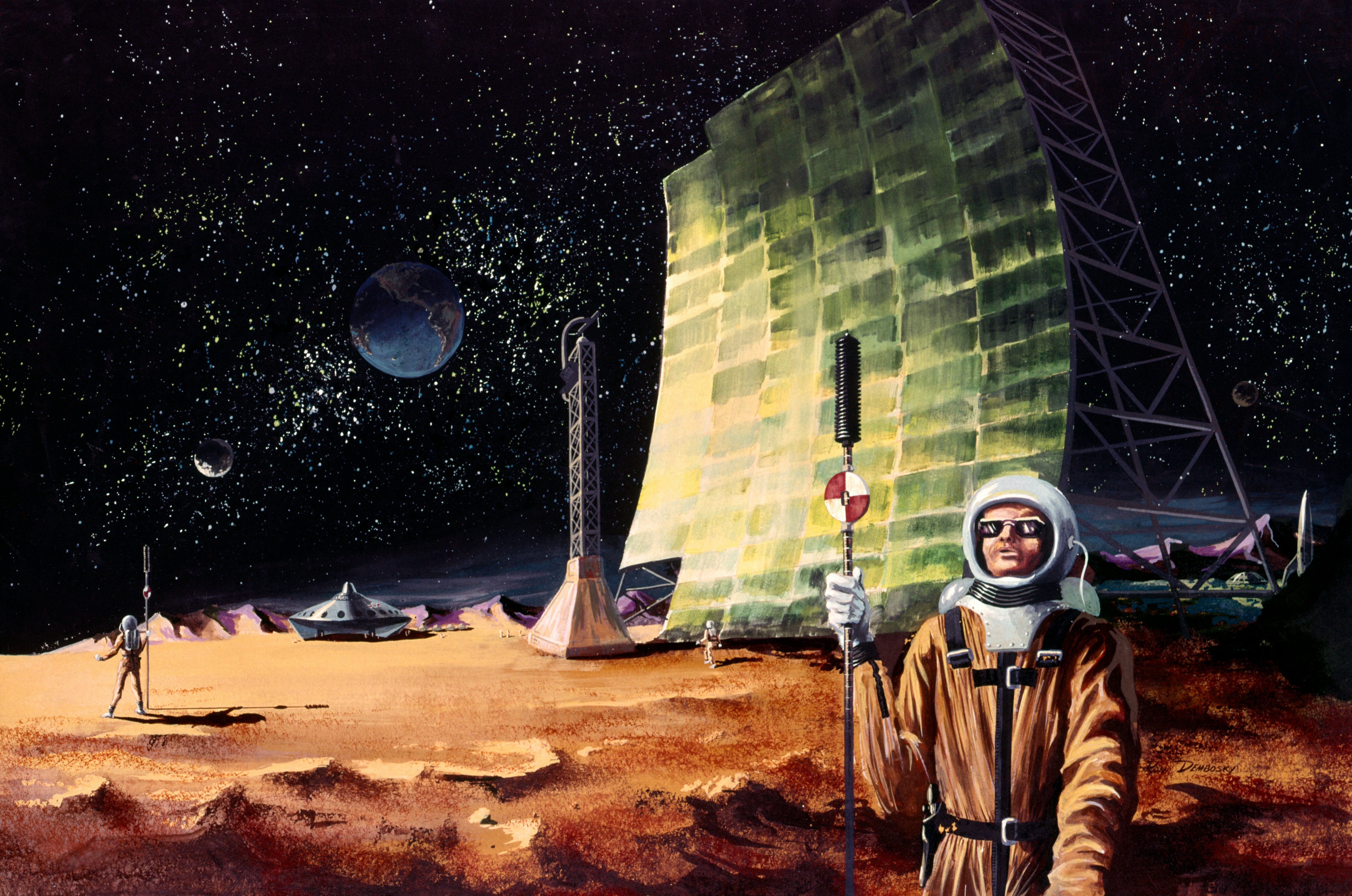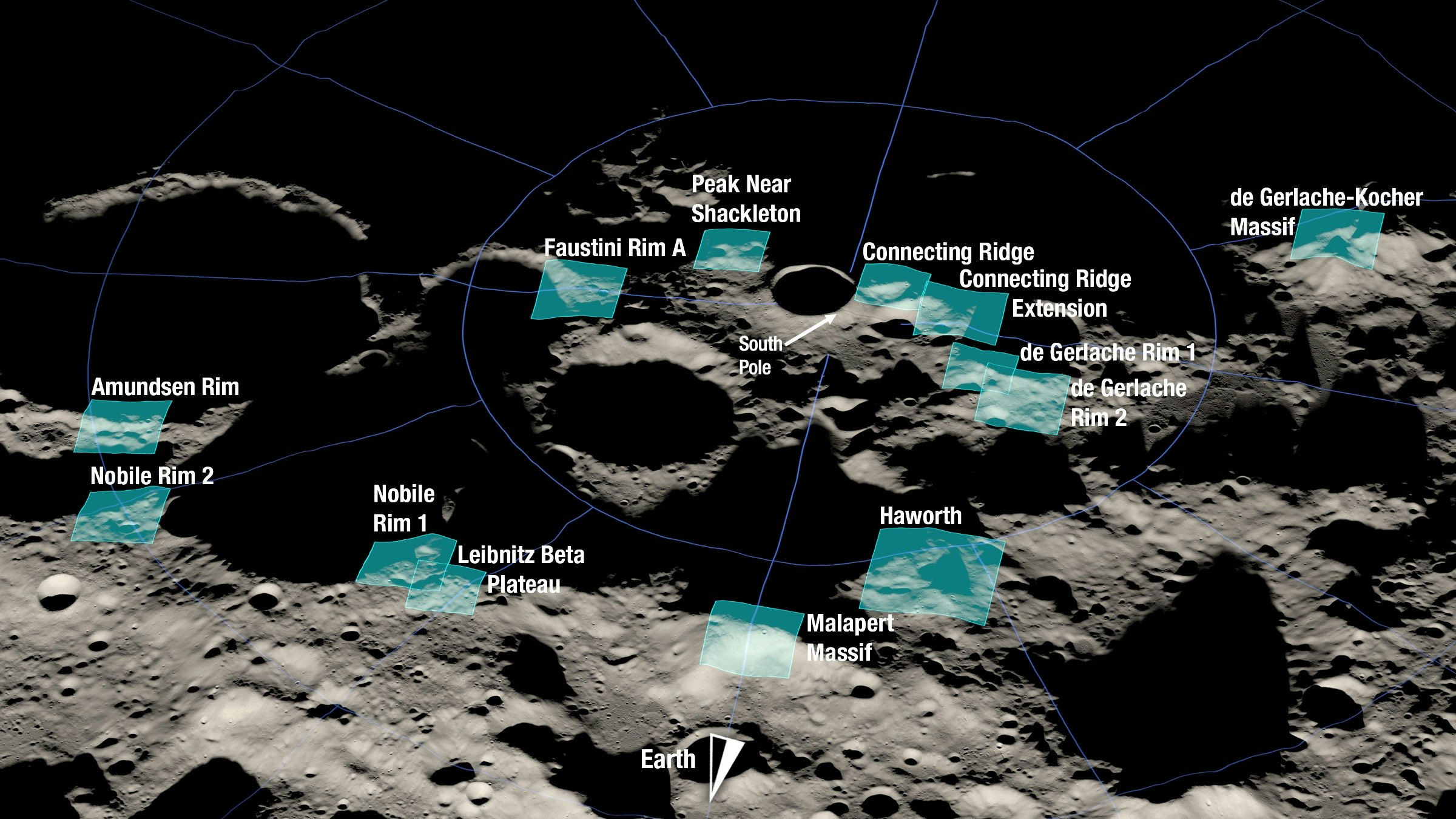
On Friday, NASA announced the final thirteen regions for the Artemis III mission, the planned return of astronauts to the Moon’s surface. But “it’s a long way away from Apollo,” notes Sarah Noble, Artemis lunar science lead, in a press conference. That’s because, no matter what site is selected, Artemis will be headed to the lunar South Pole.
All thirteen regions lie within six degrees, a little over 100 miles, of the South Pole — far closer to the pole than any missions in the past. The bulk of the Apollo landings happened near the lunar equator, and even more recent robotic landings have stuck to easier-to-reach regions.
The pole “yields a much different scene” than the classic images of Apollo landing sites, said Jacob Bleacher, Artemis chief exploration scientist. While Armstrong and Aldrin bounded across the Sea of Tranquility bathed in sunlight from the Moon’s two-week days, the poles are a comparative chiaroscuro. Near the poles, the light varies from perpetual darkness to eternal sunlight, sometimes varying over distances of just hundreds of yards.
That contrast is a big part of why Artemis is headed to the South Pole. Finding greater-than-average light will provide ready solar energy and stable temperatures, and finding permanent darkness will help uncover volatiles — especially lunar water — that have not been stripped away by billion of years of solar wind.

The sites are at Amundsen crater, two sites along the rim of Nobile Crater, Leibnitz Beta Plateau, the rim of Haworth Crater, and the rim of the crater Faustini. There are also two spots along the rim of de Gerlache Crater, which contains perpetual darkness, and at the de Gerlache-Kocher Massif — a mountain located within the crater — along with two sites on a ridge connecting the de Gerlache Crater with Shackleton Crater. Another site is on a peak near Shackleton Crater itself, within which the Moon’s South Pole is located. Malapert Massif, a peak of eternal light that is constantly illuminated by the Sun because it looms over the pole’s lunar horizon, is the final site.
These regions are going to be challenging technically to both Artemis III’s Starship and to astronauts. Because the sun rises much lower in the lunar sky as you get closer to the poles, there are going to be serious difficulties planning missions to spots that are only intermittently lit.
The Apollo missions, which landed in the Moon’s equatorial region, could count on two weeks of sunlight followed by two weeks of darkness. But sites near the poles, where shadows cast from craters and mountains can shorten the expected day down to less than a week, will offer a much tighter window for a mission to land, set up, do science, and lift off.
All thirteen have been selected for their relatively easy landing zones, with gentle terrain and ready visibility of Earth for easy communications. NASA is planning for significant safety margins in both the sites and in the planning of the missions themselves – there’s little fear that Spaceship might get suddenly stuck in the cold lunar night.
Much of the value of these sites is in their extreme contrasts. These are “craters where the sun has not reached in billions of years,” said Noble in the announcement conference. “Many of these are places the science community has been talking about for years.”
Although Artemis III is still several years off, NASA has already begun to work out how to train astronauts for work in some of the most challenging conditions the moon has to offer. Understanding how to do field geology in these extreme conditions is going to be difficult, Noble explained, but the team is already working on training astronauts to do their missions in total darkness.
Artemis expects to firm up the landing sites 18 months prior to launch. This will allow plenty of time for simulations and training on the specific site, as well as for further surveying. Today’s announcement officially opens the period of public comment, where NASA hopes feedback from the scientific community will help to narrow down the thirteen sites to the most promising few.
But there are still going to be options for Artemis. Because of the shifting shadows at the lunar South Pole, Artemis III will launch with a slate of different potential landing sites — if launch is delayed, or if some emergency arises, the mission will be able to shift to a better spot. In that case, the public may not know the ultimate landing spot for Artemis III until the weeks leading up to the mission, if not even later.







